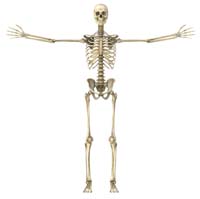
Smoking is well known to be a major health hazard, increasing the risk of not only lung cancer, but of many diseases and conditions. Smoking stunts the growth of new bone cells. Researchers have determined that tobacco smoke increases not only your risk of osteoporosis, but that the risk rises the longer you keep smoking. In other words, if you stop smoking, you slowly your increase in risk.
Actually, the observed connection is between smoking and low bone density. The connection to bone fracture risk is lower. Smokers tend to be thinner, drink more alcohol, and be less active than nonsmokers. Diet is poorer. These are all risk factors for osteoporosis. Women who smoke produce less estrogen and tend to start menopause earlier. This increases the risk of osteoporosis. There is also evidence that dietary calcium is not as well absorbed by smokers. Nicotine also reduces the activity of bone-building osteoblast cells.
There is also evidence that chemicals in the smoke obstruct bone-building activity. A recently published study found "benzo(a)pyrene (BaP) and 2,3,7,8-tetrachlorodibenzo-p-dioxin (TCDD) interact with the aryl hydrocarbon receptor" in bone cells.
Low back pain is more common among smokers. While the proximate cause of the pain can come from many sources, one possibility is that the lumbar disks do not get enough oxygen and develop disease. Smoking results in poorer blood flow to the body’s organs, including bones. After surgery for broken hips, those who smoke heal more slowly than those who do not.
A pack-a-day habit results in a 5 to 10 percent reduction in bone density by menopause.
Second-hand smoke is also thought to contribute to osteoporosis risk.

